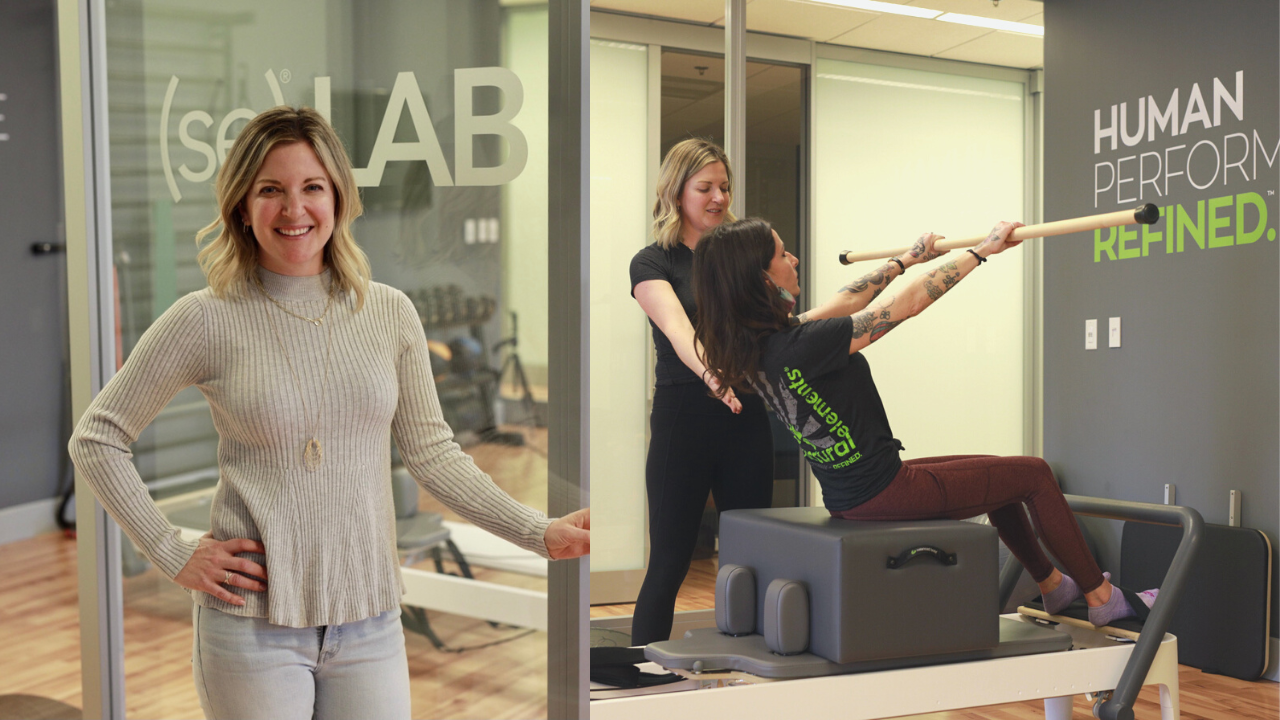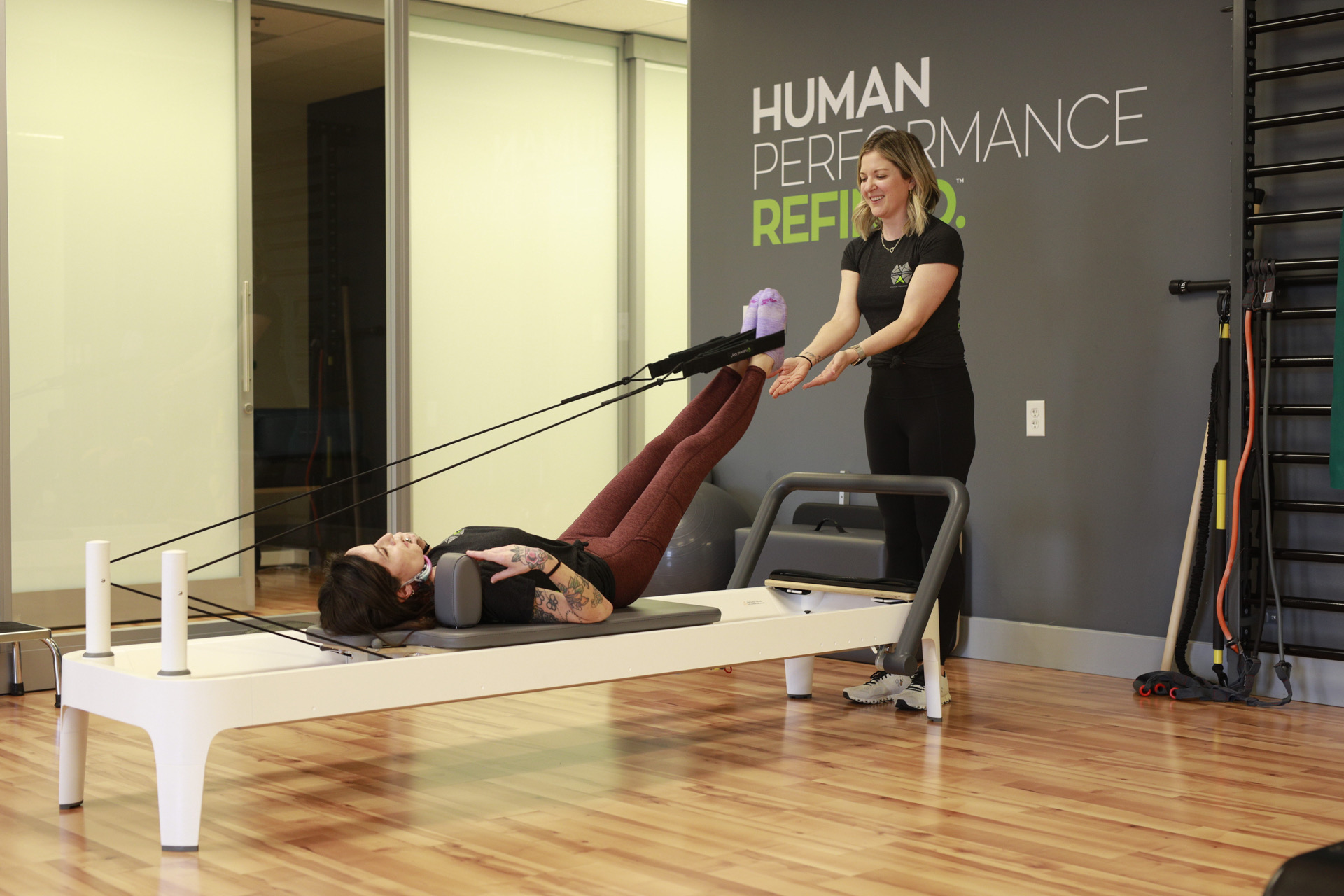
Movement Therapists at Structural Elements®
(se)® Pilates teaches you to be more Embodied
Anne Bertram, MFA, CHHC, CMA, Director of (se)® LAB, is a Registered Somatic Movement Therapist with ISMETA and is a Certified Movement Analyst with the Laban/Bartenieff Institute of Movement Studies.
Wondering what “Embodied” and “Somatic” mean and how it can benefit you? Read our Q&A below with Anne to learn more about how she works and how she applies her Somatic education and practice to (se)® Pilates sessions.
Q: So what is Somatic Practice?
A: Well that is a loaded question, but in short Somatic Movement Practices enhance human function and body-mind integration through mindful and restorative movement. It’s a philosophy that Body/Mind/Spirit are interconnected, and encourages the process of self-exploration through body awareness. The most common example I can give is Yoga. However, not all Yoga is taught in a Somatic way. In our modern culture we often use Yoga as exercise, same with Pilates. It's a lot about stretching, core strength, and 6 pack abs, however the original intention of those practices was about so much more. When taught in a more Somatic way those practices become more about gaining awareness and integrating multiple parts of yourself.
Q: So Pilates is not a workout?
A: When you take Pilates in a fitness-based Pilates studio the focus will be on getting a good workout. Working up a good sweat, a toned core, long muscles. Do those things matter? Absolutely, and there is certainly nothing wrong with those models. But we do things a bit differently. In my practice, I focus more on the Somatic aspects: postural and movement evaluation; experiential anatomy; guided movement patterning to increase efficiency. This helps to develop perceptual, kinesthetic and proprioceptive sensitivity which supports homeostasis, co-regulation and neuro-plasticity in my clients. Those are a lot of big words, but in short it’s about cultivating personal awareness
Q: How does someone know if they need that kind of session?
A: We are living in a time where humans have never been more disconnected from their bodies. Driven by the age of technology, we are a mind based society. Everyone can benefit from bringing those aspects of themselves back into relationship with one another. All humans move, all day, everyday. Every breath is movement. Even sitting in a chair involves small subtle movement. Somatic practice is really for anyone who wants to empower themselves to know more about how their body moves through the world. I think you’d be hard pressed to find anyone who doesn’t have some sort of pattern that they would like to change. Whether that's tight hamstrings, head forward posture, or some insight into pain that ails them. Somatic Practice leads to embodiment. Being in, and aware of, your body. Often rather than feeling and experiencing ourselves, someone is telling us how to move, then we “do” the movement without actually feeling it. My job is to try to change that for my clients.
Q: So how do you apply this Somatic work to Pilates?
A: The Pilates Apparatuses are a safe and very useful tool for me to use with clients. The Reformer, in particular, is so versatile that it can be used with any age or skill level. I had a teacher in my certification program that said to me, “Use the somatic work, don’t teach it.” Not everyone needs to know the language of the Laban/Bartenieff work (my Somatic Practice). But most people have heard of Pilates. It's accessible to people. In the past when I’ve called what I do Bartenieff Fundamentals Sessions, I get puzzled looks. It’s inaccessible unless someone is really seeking that particular kind of work. So in my current practice at Structural Elements®, my clients can come in and take a class that is somewhat familiar but they get the benefit of my utilizing the somatic work in sessions with them as well.
Q: If you could dispel one myth about Pilates what would it be?
A: I have two. First, I think a lot of people think they need to be in really good shape to take Pilates, but that couldn’t be further from the case. The Reformer, in my opinion, is one of the safest ways I can get clients moving who may otherwise not be able to tolerate other forms of exercise or movement.
Second, a lot of people think they can’t take Pilates Reformer classes without having taken Mat classes first. Again that could not be further from the case. There are Beginner through Advanced classes for both Reformer sessions and Mat sessions. They are different things.
Read a similar blog post:
Learn How We Balance Bodies - Q&A
Stay connected with news and updates!
Join our mailing list to receive the latest news and updates from our team.
We hate SPAM. We will never sell your information, for any reason.



